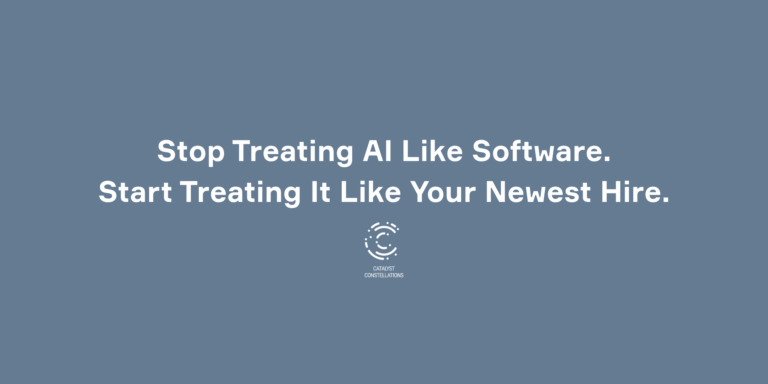You want to sustain Catalytic Energy, right?
How many moments of intense burn out can you count in your catalytic history? How many moments of self-doubt that almost stopped you mid-manifestation?
Our post about Catalyst’s challenges talked about the many things that compromise the emotional and physical well-being of Catalysts. Across the research there have been Catalysts that have powerful practices to manage these challenges and maintain momentum. So let’s take time to discuss best practices to sustain Catalytic energy, so we can more powerfully change the world.
#1. Build in Time for “Quiet”
The most resilient and consistent Catalysts have a routine that dogmatically builds in spaces for “quiet”. Catalysts take in lots of information. You need moments of quiet to allow for connections to be made and have your ‘ah-hahs’. Some people talk about this time as self-care, however, we choose the frame of “quiet” to reflect the need for intentional moments without bustle to counter-act our normally externalized and busy schedules. These moments allow our brains and intuitions the space to make connections so we can more clearly see possibilities. While building in quiet has positive health benefits, we are also talking about productivity. Catalysts are more productive when we build in spaces for quiet.
Quiet can mean different things, such as walks in nature, long showers, yoga, swimming, journaling, meditation or intense exercise such as running. There is no particular practice that works for all – so experiment to see what helps create space for you to spark information into ideas.
The most critical point is to bullishly protect the space. When we get into a busier phase our routine of quiet tend to be de-prioritized, but that is when we need them most. In fact, the most effective Catalysts increase activities of quiet during their busiest times.
#2. Sustain Catalytic Energy by Finding a Trusted Group
The most resilient Catalysts build a group they trust to bounce ideas with them. This can be a set of individuals you reach out to 1-to-1 or it could be a group of people with whom you come together, perhaps your own team or peers.
This is important because new ideas can be quickly shut down by some which can lead us to self-doubt and halting progress. Or new ideas can instill fear in some people creating a counterproductive ripple. Rather than isolate in response to these experiences, find your people. Sustain Catalytic energy by having others that build with you can improve your ideas, help you create clarity on next steps and make you braver.
#3. Consciously Reframe “Failure”
The ability to quickly frame challenge as new information is a telltale sign of Catalysts. This is a process of testing and experimenting – each action is a test we are experimenting with, then we reflect on the impact of the action, and iterate based on what we learn. It can be referred to as Design Thinking, or a Learning Mindset, or even as the scientific process.
However, because many Catalysts are externally focused they don’t realize they naturally do this – they are unconsciously competent. When we are not aware of our natural abilities it can be difficult or impossible to call on these abilities with intention. Therefore, when something big doesn’t come through Catalysts can find themselves disheartened and stuck.
The most resilient Catalysts are aware of the Learning Mindset and use it consciously to reframe challenges and ‘failure’ as critical to inform next steps. This doesn’t mean they don’t have moments of frustration or sadness when something doesn’t work out. We all have moments of disappointment. However, these feelings can be acknowledged and then intentionally transitioned from feelings of failure to information that will allow them to move forward.
#4. Prioritize and Keep Lists to Sustain Catalytic Energy
As Catalysts we have more ideas than we can possibly ever implement, and our attention can be pulled away by the newest, shiniest ideas. Research shows that Catalysts sustain energy on current ideas by using fierce prioritization and lists to stay on track.
Lists serve several purposes.
First, they are a way to stop ideas from cycling in our head. If we get them out on paper it can stop the noise in our heads so we can better focus.
Additionally, writing things down ensures we don’t forget tasks we know are important, or could be important later. Because Catalysts love jumping to action, they don’t always take the time to cross T’s and dot I’s. So lists serve to remind us of the remaining T’s and I’s.
Prioritization is a complement to list making.
Once we get good at writing down the actions we might take, we realize there are too many to do NOW. Therefore we can look through our list and prioritize what has to happen right away to maximize results.
Prioritization is most effective when done every morning, creating clarity on the most important tasks that must get done that day. This keeps us on track to leverage our official working hours as effectively as possible. It is easy to follow the energy of new ideas and by the close of business realize we hadn’t finished things that were critical, which can lead to unnecessary late nights or missed personal engagements.
Prioritization is also an effective tool for Catalytic Leaders, allowing a team to have a shared understanding of the most important goals and projects for the whole team.
#5 Partner with Implementation-Focused and Detail-Oriented People
Another way Catalysts maintain energy is to partner with people who love to do detail oriented work. A Catalyst’s super power usually lies in coming up with ideas, getting things started and moving pieces into action. Managing all the details once implementation has begun or seeing a project through to completion can feel draining, even impossible for Catalysts. Therefore one tactic successful Catalysts leverage is finding people that love details and love to implement. Find your ‘closers’ and build them into your process.
In Closing
“I am now building strategies to keep this energy and keep it rolling. I fill my gas tank, have regular moments of quiet, create vision alignment and pick my priorities – so I stay in my flow and consistently move forward. Taking time for myself, in particular, helps me create with more ease and not collapse.”
Catalyticness can feel great – putting pieces together, coming up with ideas and watching the world around us improve. And it can be immensely draining. There are many Catalysts that have built practices that allow them to maintain energy which amplifies their power. Building these into your routines can help you become a more powerful change agent, too.
***
Background on Catalyst Research
In November 2015, I looked at the similarities between my favorite clients. Stark similarities emerged. I didn’t have a word to describe them. Then in my very next coaching session with one of those clients he said “I realized I’m a Catalyst”.
It was like lightning struck. Yes!
That is what ties my favorite clients together. I had observational data from working with my clients, but I wanted to be more direct in my quest so I could better serve my ideal clients. I leaned into my background as a social scientist and began to systematically interview people that self-identify as Catalysts. These posts are outputs from that research.
I’d love to hear your thoughts on and experience with Catalysts. If you self-identify as a Catalyst or Change Agent let me know what resonates!




